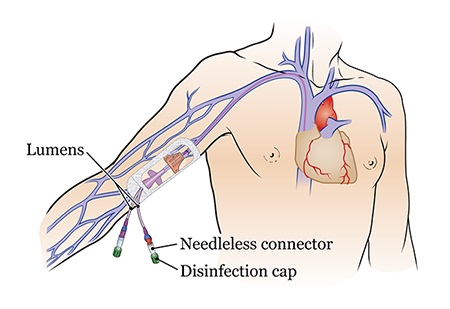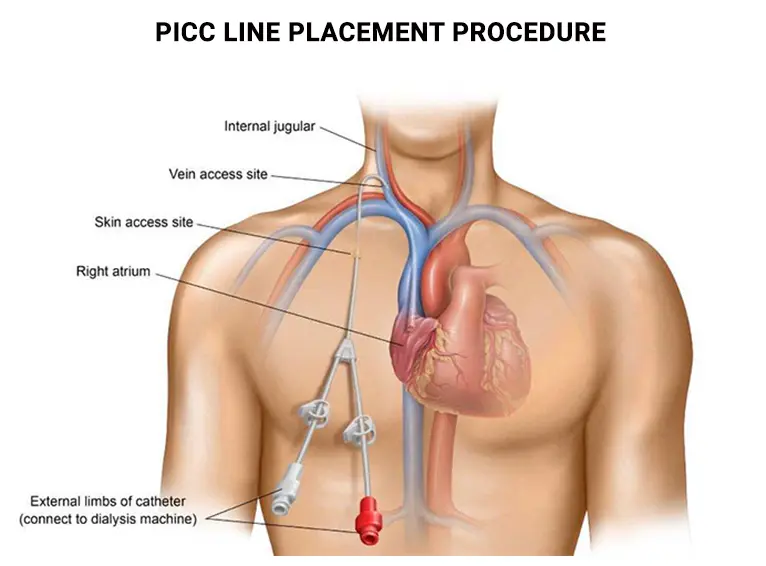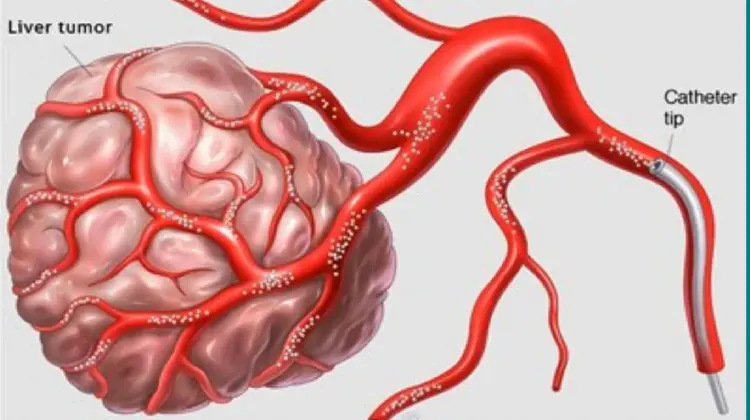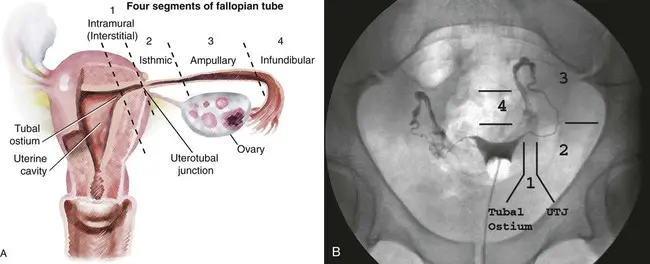A Peripherally Inserted Central Catheter (PICC) line is a long, thin tube that is inserted through a vein in the arm and passed through to the larger veins near the heart.
A PICC line is commonly recommended for cancer treatments, liquid nutrition (total parenteral nutrition), infection treatments, and other medications that can irritate small veins. Once your PICC line is in place, it can also be used for
- Blood draws
- Blood transfusions
- Receiving contrast material before an imaging test.

PICC Line Placement: A Comprehensive Guide
A Peripherally Inserted Central Catheter (PICC) line is a long, thin, flexible tube that is inserted through a peripheral vein, typically in the arm, and threaded into a larger vein in the body, usually near the heart. PICC lines are commonly used for various medical purposes, including the administration of medications, chemotherapy, intravenous (IV) fluids, and for blood draws. Here’s a detailed overview of PICC line placement:
1. Indications:
- Long-Term IV Therapy
- Chemotherapy
- Antibiotics
- Nutrition
- Frequent Blood Draws
2. Placement Procedure:
- Preparation: Before the procedure, the patient’s medical history is reviewed, and any contraindications are assessed. The insertion site is typically in the upper arm.
- Ultrasound Guidance: Often, ultrasound is used to locate the appropriate vein for insertion.
- Sterile Technique: The procedure is performed under sterile conditions to reduce the risk of infection.
- Local Anesthesia: A local anesthetic is used to numb the area where the PICC line will be inserted.
- Insertion: A healthcare provider inserts the PICC line through a small incision, typically in the arm, and guides it into a larger vein, usually the superior vena cava, using imaging guidance.
- Catheter Securement: The PICC line is secured in place with sutures and adhesive dressings.
- Chest X-ray: A post-placement chest X-ray is often done to confirm the correct positioning of the PICC line.
3. Care and Maintenance:
- Dressings: The site where the PICC line enters the skin is covered with a sterile dressing, which should be kept clean and dry.
- Flushing: The line is flushed regularly with sterile saline or heparin to prevent blockages and maintain patency.
- Dressing Changes: Dressings are changed regularly to prevent infection.
- Monitoring: Patients with PICC lines are monitored for signs of infection, blockage, or other complications.
- Removal: When the treatment course is completed or if complications arise, the PICC line is removed by a healthcare provider.
4. Patient Education:
- Patients with PICC lines are educated on proper care, signs of infection, and what to do in case of complications.
5. Removal:
- PICC lines are removed when they are no longer needed, or if complications arise, by a healthcare provider.
Overall, PICC line placement is a valuable medical procedure that provides long-term access for various treatments and therapies while minimizing the need for repeated needle sticks. However, careful care, monitoring, and attention to potential complications are essential for the safe and effective use of PICC lines.




